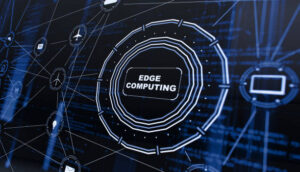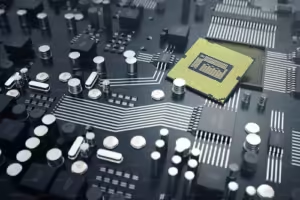
Edge Computing
In today’s interconnected world, the generation and consumption of data are growing exponentially. As we embrace technologies like the Internet of Things (IoT), autonomous vehicles, and smart cities, the need for efficient and real-time data processing becomes paramount. This is where edge computing steps in. Edge computing is a distributed computing paradigm that brings computational power and data storage closer to the source of data generation. In this article, we will explore the concept of edge computing, its benefits, applications, and the transformative impact it is having on various industries.
Understanding Edge Computing:
Traditionally, data processing has been centered around remote cloud servers, where data is transmitted, processed, and delivered back to end-users. Edge computing, on the other hand, decentralizes this process by moving computational capabilities closer to where the data is being generated. This is achieved by deploying computing resources, such as servers or edge devices, at the edge of the network, closer to the data source.
Also Read: The Accelerating Wave: 5G Network Expansion Revolutionizes Connectivity
Benefits of Edge Computing
Edge computing offers several advantages over traditional cloud-centric approaches:
Reduced Latency:
By processing data near its source, edge computing significantly reduces the latency associated with transmitting data to distant cloud servers. This is critical for real-time applications that require immediate responses, such as autonomous vehicles, industrial automation, and remote healthcare monitoring.
Bandwidth Optimization:
Edge computing reduces the amount of data that needs to be transmitted to the cloud, alleviating network congestion and optimizing bandwidth usage. Only relevant and processed data is sent to the cloud, reducing costs and improving overall network efficiency.
Improved Reliability:
With edge computing, applications can continue to function even in the event of intermittent connectivity or network disruptions. Local edge devices can perform critical computations and make decisions independently, ensuring uninterrupted operation and enhanced reliability.
Enhanced Data Privacy and Security:
Edge computing can address concerns regarding data privacy and security. By keeping sensitive data local and processing it at the edge, organizations can have greater control over data access, reducing the risk of data breaches and ensuring compliance with regulatory requirements.
Applications of Edge Computing:
Edge computing has a wide range of applications across various industries:
Autonomous Vehicles:
Edge computing enables real-time data processing for autonomous vehicles, allowing them to make split-second decisions without relying on cloud connectivity. It enhances safety, reduces response times, and enables immediate actions in critical situations.
Industrial IoT:
In industrial settings, edge computing enables real-time monitoring and control of machines and processes. It facilitates predictive maintenance, improves operational efficiency, and enables faster decision-making by analyzing data at the edge.
Smart Cities:
Edge computing plays a crucial role in building smart cities. By deploying edge devices throughout urban infrastructure, data from sensors and connected devices can be processed locally, enabling efficient management of resources, traffic optimization, and enhanced public safety.
Healthcare:
Edge computing is revolutionizing healthcare by enabling remote patient monitoring, real-time analysis of medical data, and personalized healthcare delivery. It facilitates faster diagnosis, improves patient outcomes, and reduces the burden on healthcare infrastructure.
Retail:
In the retail sector, edge computing enables personalized customer experiences by analyzing customer data in real-time. It supports inventory management, enables targeted advertisements, and enhances overall customer satisfaction.
Video Surveillance:
Edge computing allows for real-time video analysis and intelligent surveillance. By processing video data locally, it reduces the need for constant network bandwidth and enables immediate response to security threats.
Future Directions and Challenges:
As edge computing continues to advance, there are several areas that researchers and industry experts are focusing on:
Edge-AI Integration:
Combining edge computing with artificial intelligence (AI) enables real-time data analysis, pattern recognition, and decision-making at the edge. This integration opens up possibilities for more intelligent and autonomous edge devices.
Standardization:
Establishing common standards and protocols for edge computing is essential to ensure interoperability and seamless integration across different edge devices, platforms, and networks.
Scalability and Management:
Managing and scaling a large number of distributed edge devices poses challenges in terms of device management, software updates, and resource allocation. Streamlining these processes will be crucial for widespread adoption.
Security:
As more sensitive data is processed at the edge, ensuring robust security measures is critical. Protecting edge devices, securing data transmission, and implementing encryption protocols are ongoing areas of research.
Edge computing relies on a variety of devices that bring computational power and data processing capabilities closer to the edge of the network.
Here are some examples of commonly used edge devices in edge computing:
Edge Servers:
These are compact servers deployed at the edge of the network, typically in close proximity to data sources. Edge servers handle data processing tasks and support real-time analytics, enabling faster decision-making and reducing latency.
Gateways:
Gateways act as intermediaries between edge devices and the cloud. They provide connectivity, protocol translation, and data aggregation functionalities. Gateways enable edge devices to communicate with the cloud while also performing local data processing and filtering.
Edge Routers:
Edge routers are used to manage network traffic and provide routing capabilities at the edge of the network. They help optimize data flow, ensure low latency, and enable efficient communication between edge devices and the cloud.
Edge Switches:
These switches are designed specifically for edge computing environments. They provide high-speed and low-latency network connectivity for edge devices, enabling fast and reliable data transfer.
Edge Appliances:
Edge appliances are purpose-built devices that perform specific tasksat the edge of the network. For example, there are edge appliances designed for video analytics, security monitoring, or industrial automation. These appliances are optimized for specific use cases and often have built-in processing capabilities.
Edge Sensors:
Sensors play a crucial role in data collection at the edge. They can include various types of sensors such as temperature sensors, humidity sensors, motion sensors, and environmental sensors. Edge sensors capture real-time data from the physical environment and transmit it to the edge devices for processing and analysis.
Edge Cameras:
Edge cameras are used for video surveillance and monitoring applications. They capture video footage and perform local video analysis, reducing the need for transmitting vast amounts of data to the cloud.
Industrial Controllers:
In industrial settings, edge computing often involves the use of programmable logic controllers (PLCs) or industrial PCs. These devices control and monitor industrial processes locally, ensuring real-time response and minimizing dependency on cloud connectivity.
Wearable Devices:
Wearable devices, such as smartwatches or fitness trackers, can also serve as edge devices. They collect and process data on the user’s body, providing immediate feedback and insights without relying heavily on cloud services.
Mobile Edge Computing (MEC) Devices:
MEC devices, such as small-scale servers or base stations, are used in mobile networks. They bring computational capabilities closer to the network edge, enabling low-latency services and supporting applications like augmented reality and real-time video streaming.
These are just a few examples of the diverse range of edge devices used in edge computing. The selection of an edge device depends on the specific requirements of the application, the level of processing power needed, and the environmental conditions in which it will operate.
Also Read: Understanding Neurotrophic Engineering, Principles and Applications
Using wearable devices as edge devices in edge computing offers several advantages:
Real-time Data Processing:
Wearable devices, such as smartwatches or fitness trackers, collect data directly from the user’s body, providing real-time insights and feedback. By processing data locally on the device, wearable edge devices can deliver immediate responses and actionable information without relying on cloud connectivity. This is particularly beneficial for applications that require quick and timely decision-making, such as health monitoring or fitness tracking.
Reduced Latency:
Wearable devices as edge devices minimize latency by processing data locally. Instead of transmitting all the collected data to a remote server for analysis, wearables can perform initial data processing and filtering on the device itself. This reduces the latency associated with transmitting data back and forth between the device and the cloud, resulting in faster response times and improved user experience.
Privacy and Security:
Wearable devices often handle sensitive personal data, such as health information or biometric data. By processing data locally on the edge device, wearables can maintain user privacy and security. Personal data remains on the device and is not transmitted to external servers unless
necessary. This reduces the risk of data breaches and gives users more control over their information.
Improved Energy Efficiency:
Wearable devices typically operate on limited battery power. By performing data processing tasks locally, wearables can minimize the amount of data that needs to be transmitted to the cloud. This reduces the energy consumption associated with wireless data transfer, extending the battery life of the device and ensuring longer usage between charges.
Offline Functionality:
Wearable devices as edge devices can continue to function even in environments with limited or no connectivity. They can collect and process data locally, providing valuable insights and functionality to users, independent of network availability. This is particularly useful in scenarios where constant cloud connectivity is not guaranteed, such as outdoor activities or remote locations.
Contextual Awareness:
Wearable devices are often equipped with various sensors and actuators that enable them to capture contextual information about the user’s environment. By processing this data locally, wearables can provide personalized and context-aware services. For example, a smartwatch can analyze sensor data to detect the user’s activity level, heart rate, or location, and deliver relevant notifications or recommendations accordingly.
User Experience and Interaction:
Wearable devices offer a natural and intuitive interface for user interaction. By leveraging edge computing capabilities, wearables can process user inputs locally and deliver immediate responses, creating a seamless and interactive user experience. This is particularly relevant for applications like augmented reality or gesture-based control systems.
By leveraging the advantages of wearable devices as edge devices in edge computing, users can benefit from real-time insights, improved privacy, reduced latency, energy efficiency, and enhanced user experiences. The combination of wearable technology and edge computing opens up new possibilities for personalized and context-aware applications in various domains, including healthcare, fitness, and augmented reality.
Inspite of all being said, Edge computing represents a paradigm shift in data processing, offering lower latency, improved reliability, bandwidth optimization, and enhanced data privacy. Its applications span across industries, transforming sectors such as autonomous vehicles, industrial IoT, healthcare, and smart cities. As edge computing continues to evolve, researchers and industry leaders are addressing challenges related to standardization, scalability, security, and device management. With its transformative potential, edge computing is poised to reshape the way data is processed, enabling innovative technologies and driving the future of interconnected systems.







1 thought on “Edge Computing: Transforming Data Processing and Driving the Future of Technology”